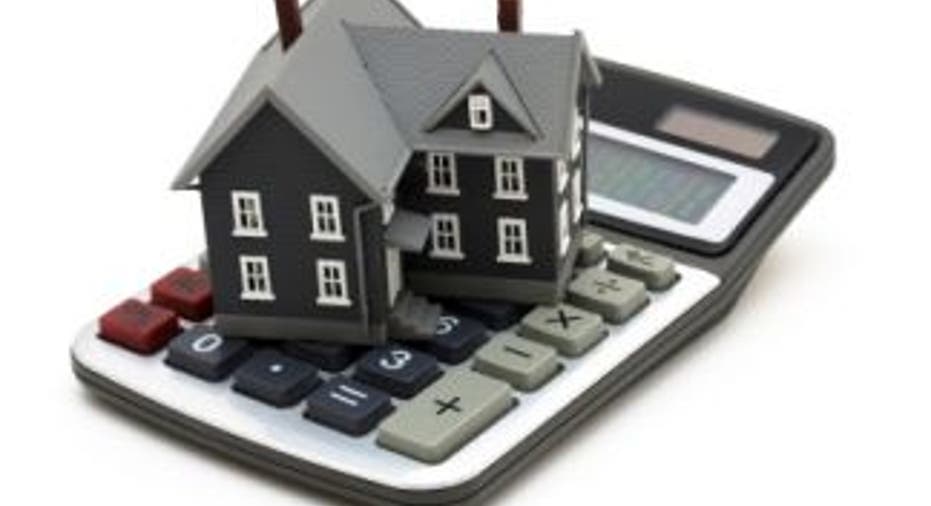How to Cope With Higher Mortgage Rates

Options When Mortgage Rates Rise
Mortgage rates went up about half a percentage point in May 2013. That presents a dilemma for homebuyers and homeowners who want to refinance: Pay more each month or find a way to reduce the cost.
The solutions are few, and the trade-offs many, yet borrowers do have some options in addition to the traditional 30-year fixed-rate mortgage. Here are the pros and cons of each.
Play it Safe
Despite the higher monthly payment, a 30-year fixed-rate loan still makes good sense for many home buyers and homeowners, according to Peter Thompson, a senior loan officer with Prospect Mortgage in Naperville, Ill.
"For a lot of people, the fixed-rate is the best way to go," he says. "If you look at the rates right now, they are still historically low."
The upside is peace of mind that neither the rate nor payment will ever increase. The downside is that borrowers who move or refinance within a few years will forgo the savings they would have realized on a shorter-term loan with an adjustable rate.
Borrowers who have a strong credit score or want to borrow, say, 80% or less of the home's value may be offered a more attractive rate than will borrowers who have a marginal credit history or need a higher loan-to-value ratio.
Shopping around for a loan and paying points are two ways to try to get a lower rate. (A point is an upfront fee equal to 1% of the loan amount.)
Take a Risk
A second option is a "hybrid" loan that's fixed for an initial period of three, five, seven or 10 years, and then converts into an adjustable-rate mortgage, or ARM. The typical difference, or "spread," between the rate on a 30-year loan and the rate on a hybrid ARM makes this type of loan "very desirable," says Leif Thomsen, CEO of Mortgage Master in Walpole, Mass.
The savings can be significant. For example, a $200,000 30-year fixed-rate loan at 4.25% would have a monthly principal and interest payment of $938.88, while a $200,000 5/1 ARM with an initial rate of 3.25% would have a monthly payment of $870.41. The difference, $68.47 a month, totals $4,108.20 over five years.
The risk is that the interest rate may be much higher after the initial term expires. If the rate skyrocketed to the limit, that "would be a disaster," Thomsen says, as the savings would be wiped out within a few years.
Borrowers who choose a hybrid loan typically plan to sell their house, refinance the loan or get a big raise before the rate adjusts. Therein lies the risk because the move or pay hike might not happen, and ability to refinance isn't guaranteed.
Rate Roulette
An even riskier option is a one-year ARM, which has an initial rate that lasts only 12 months before it begins to adjust, usually annually or monthly.
This type of loan typically has a lower rate than a 30-year fixed-rate mortgage. And lately, the initial rates on one-year ARMs have been higher than the initial rates on 5/1 ARMs in Bankrate's weekly surveys.
Thomsen says the savings on a one-year ARM aren't worth the risk.
"We would never recommend that," he says, "You only have 12 payments at a certain rate, and the difference between a seven-year rate and one-year rate is minimal."
Buy 'Less House'
Borrowers who don't want to make a higher payment or accept the risk of a hybrid or traditional ARM, can trim the cost of the loan by buying a less expensive home or making a larger down payment to reduce the mortgage amount.
For example, the principal and interest on a $220,000 loan at 4.25% would be $1,082.27, and a $250,000 loan at the same rate would cost $1,229.85 a month. The smaller loan saves $147.58 a month. An even smaller loan would mean even more savings, though the trade-off may be a less desirable home.
"People are looking more at what's affordable and what's a payment they can manage," Thompson says. "I don't see that changing just because the rates ticked up."
Use a 'Cash-in' Refinance
Homeowners who want to refinance to get a fixed or lower interest rate, though perhaps not as attractive a rate as they might have been offered a few months ago, can use a similar strategy. In this case, the approach is a "cash-in" refinance, in which the homeowner brings cash into the new mortgage to reduce the loan amount and payment.
The advantage is a smaller monthly outlay and better cash flow. The disadvantage is having to put up the cash, which then cannot be used for other purposes.